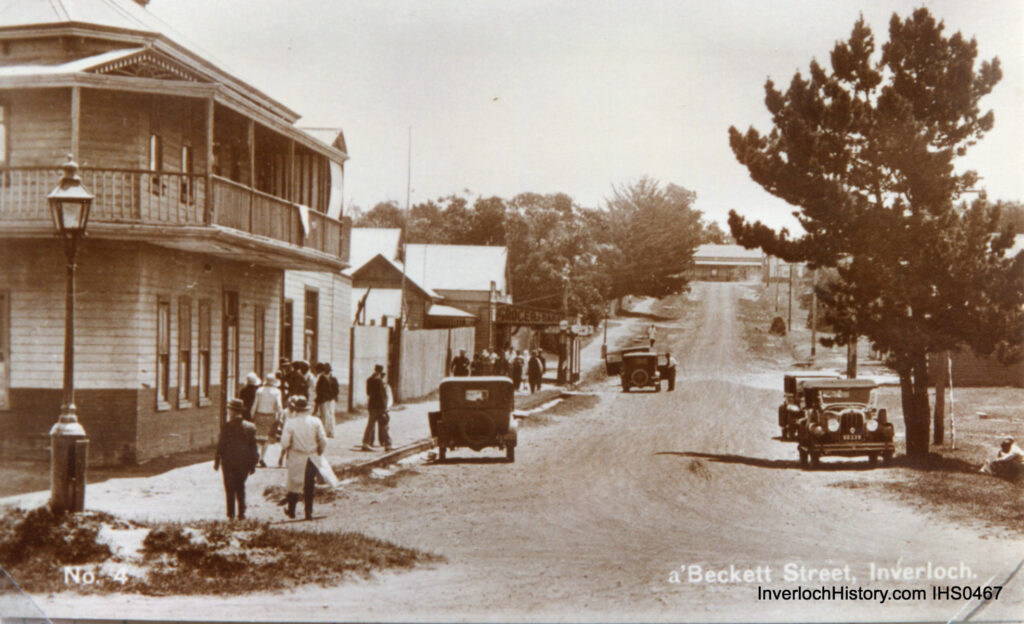..
(Note: This is a text excerpt. Refer to the newsletter PDF for the complete newsletter including images)
The Ripple
We have recently acquired from Jack Miller documents related to the manifests (cargo) of the Ripple. Thank-you Jack for the Donation.
Eulalie showed us a book entitled “The Anzac Book” written and illustrated by the Men of Anzac and printed by Cassell and Company Ltd. London, New York, Toronto and Melbourne. It has an Introduction written by Sir W.R. Birdwood, dated Anzac December 19th 1915. This book was produced in the lines at Anzac on Gallipoli in the closing weeks of 1915.
Guest Speaker
Carol Thorn spoke about Pine Lodge and also her father Cal Wyeth. Walking on Inverloch beach in 1926, Cal Wyeth met Mrs Maggie Graham, who owned the land on the hill known as the Pine Paddock where Pine Lodge was built. He bought this land from her, and he subsequently bought other adjoining land to the west and to the south including much of what is now Wyeth- McNamara Park.
Cal Wyeth was involved in three engineering businesses in Melbourne, producing milk bottle tops and other items. And one of Cal’s achievements was to perfect the machine which attached crown seals to glass bottles. He did not invent the crown seal, but previous machines used to break every third or fourth bottle when attaching the seal, so Cal’s invention Carol Thorn was a great improvement.
Image: Carol Thorn
In 1927, he travelled for work to the USA to buy machinery, and he also saw modern building techniques and quality accommodation establishments. After advice that a world economic depression was coming, he sold his business interests in Melbourne, and in 1930 started building Pine Lodge. Before construction could start, several large pine trees had to be cut down; this was done by Cal Wyeth, Clive Newton’s father and Roy Saunders.
The bricks to build Pine Lodge were made on site from beach sand and salt water. Doors and window frames were imported from Melbourne. The roof of the main building was covered with malthoid; other later buildings had corrugated iron roofing. The construction of the main building of Pine Lodge employed 15-20 men, and was completed in 24 weeks!
In the 1930’s, Pine Lodge was considered one of the best guesthouse in Victoria; Governors and other notables stayed there. Built on a grand scale, the Lodge included 13 bedrooms, a dining room 24 feet square, a billiard room, lounge, modern bathrooms for ladies and gentlemen, and hot and cold water in every bedroom. At this time, Pine Lodge had the only private phone line in Inverloch (there was a public phone elsewhere), and Pine Lodge’s phone number was “Inverloch 7”.
Pine Lodge had electricity from its own generator, however, Inverloch did not get town electricity until many years later. The powerhouse held a ship’s generator, run on heavy diesel fuel, which provided electricity and lighting for the building and some street lighting.
Activities available at Pine Lodge included a short 9 hole golf course, motor boating, conducted tours, quail hunting, a pianola, and tennis courts. The tariff was 4-7 guineas per week for a single and 7+ guineas per week for a double.
Cooking was performed on a two oven coal range. Refrigeration (a modern luxury ) was provided by an electric ammonia-cycled refrigerant, and later a walk-in coolroom.
There was water storage of two million litres. Runoff from the Lodge roof provided drinking water; the tennis courts’ runoff was used for the toilets; and bath water could be recycled for toilets.
In 1931, 7 single rooms and 5 doubles were added in a two-storey wing; more rooms were added through the 1930’s, including the 36 by 24 feet ballroom.
In 1938 the swimming pool was built, using local redstone from the Wonthaggi mines. The pool’s depth ranged from 3 feet to 10 feet, with a six feet diving board. Water was pumped from the seat half tide and higher. There was a 300 feet draw up to the waterfall, toddlers’ pool and swimming pool, in which many local children learned to swim. The pool took two and a half tides to fill (34 hours), and 10 hours to empty. It was available free to guests, and visitors paid 6d (Carol collected the payments).
In 1941 Pine Lodge was taken over by the government, and was used as a recuperative hospital for the Navy until 1947. The Wyeth family lived on their farm during this period.
When Pine Lodge was returned to the Wyeths, it was in considerable disrepair, and it took a long time to get the Lodge back to a usable state. It was then reinstated in 1949 as a family holiday lodge. There was a community kitchen, with a locked cupboard for each room’s guests to store their food, and they had use of the sporting and other facilities. It was a cheap option for a family holiday in the 1950’s.
During and after the 1950’s, Pine Lodge was used by many schools for camps during the weeks, and University students stayed there at weekends. Carol’s younger brother did the catering then, with Carol helping out at weekends through the 1970’s. In the 1980’s, Pine Lodge was hit by many problems, including the requirement to connect to town water and sewerage, install fire safety equipment, and the street scheme.
Pine Lodge closed in 1983, and was demolished in 1985.
Carol was born in a room of the original building at Pine Lodge, during a blackout when the electricity was off.
The imposing Pine Lodge gateways on Ramsey Boulevard were built by Jean Cross’ father, Mr. Carmichael.
Carol was thanked by Shirley Burchett for her interesting and enjoyable talk, and a presentation was made to Carol in appreciation of her time with us.
Image: Pine Lodge
(Many thanks to Alison Brewster for compiling Carol’s talk ).
Editor: Ian McBurnie

